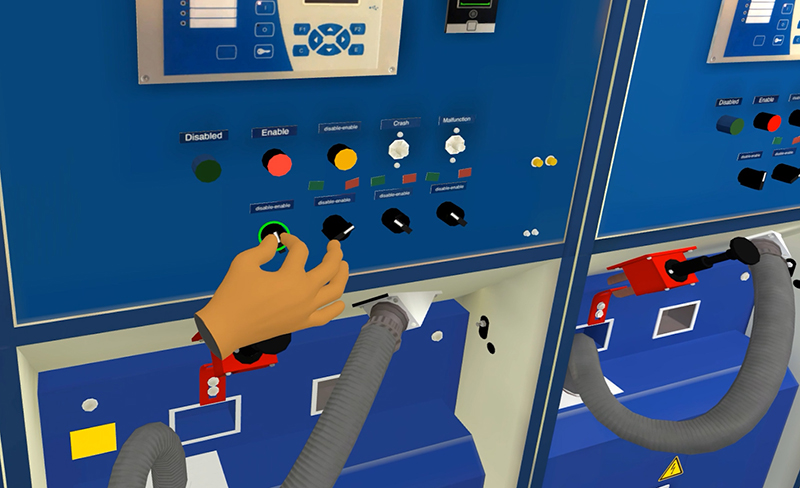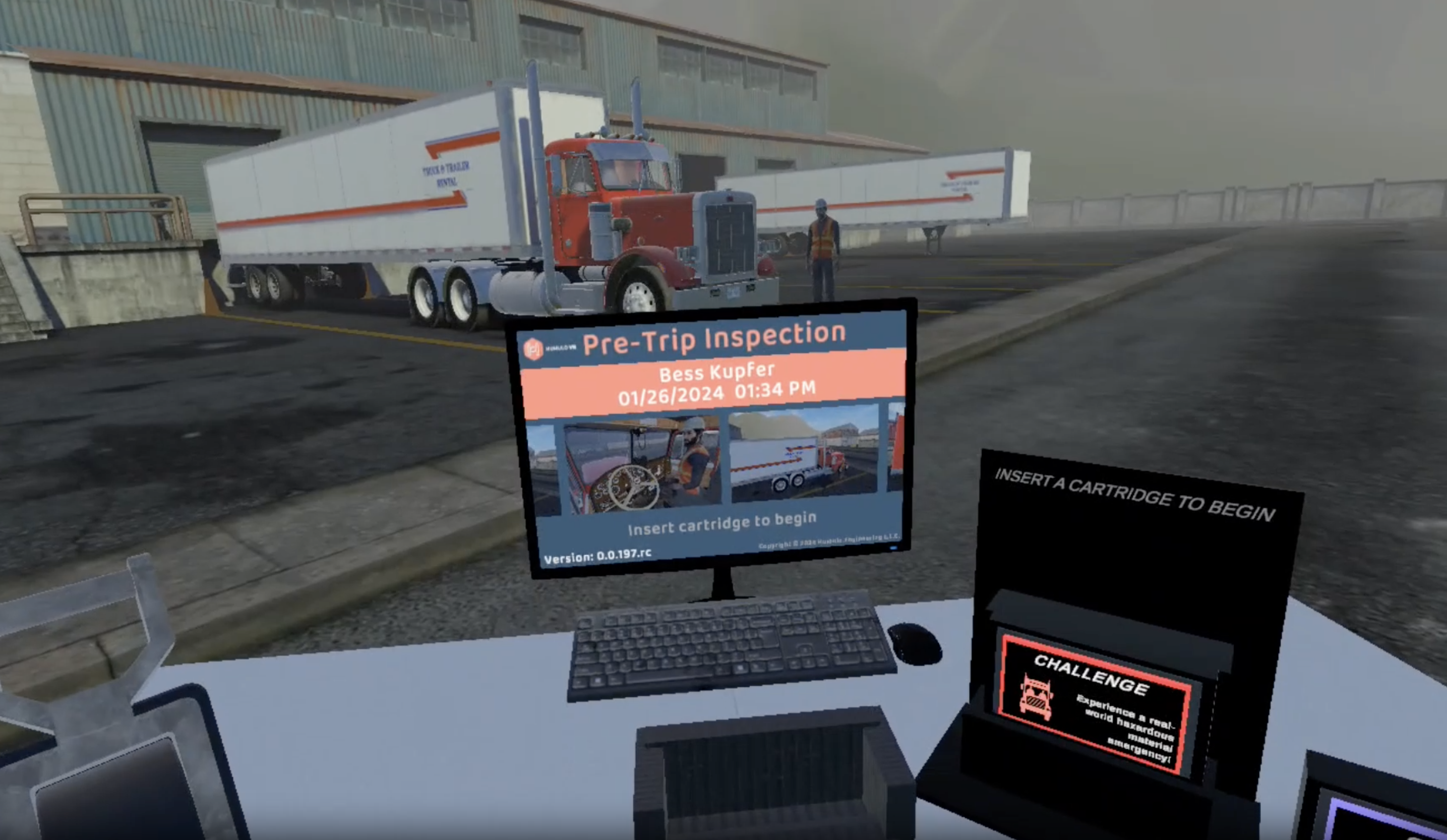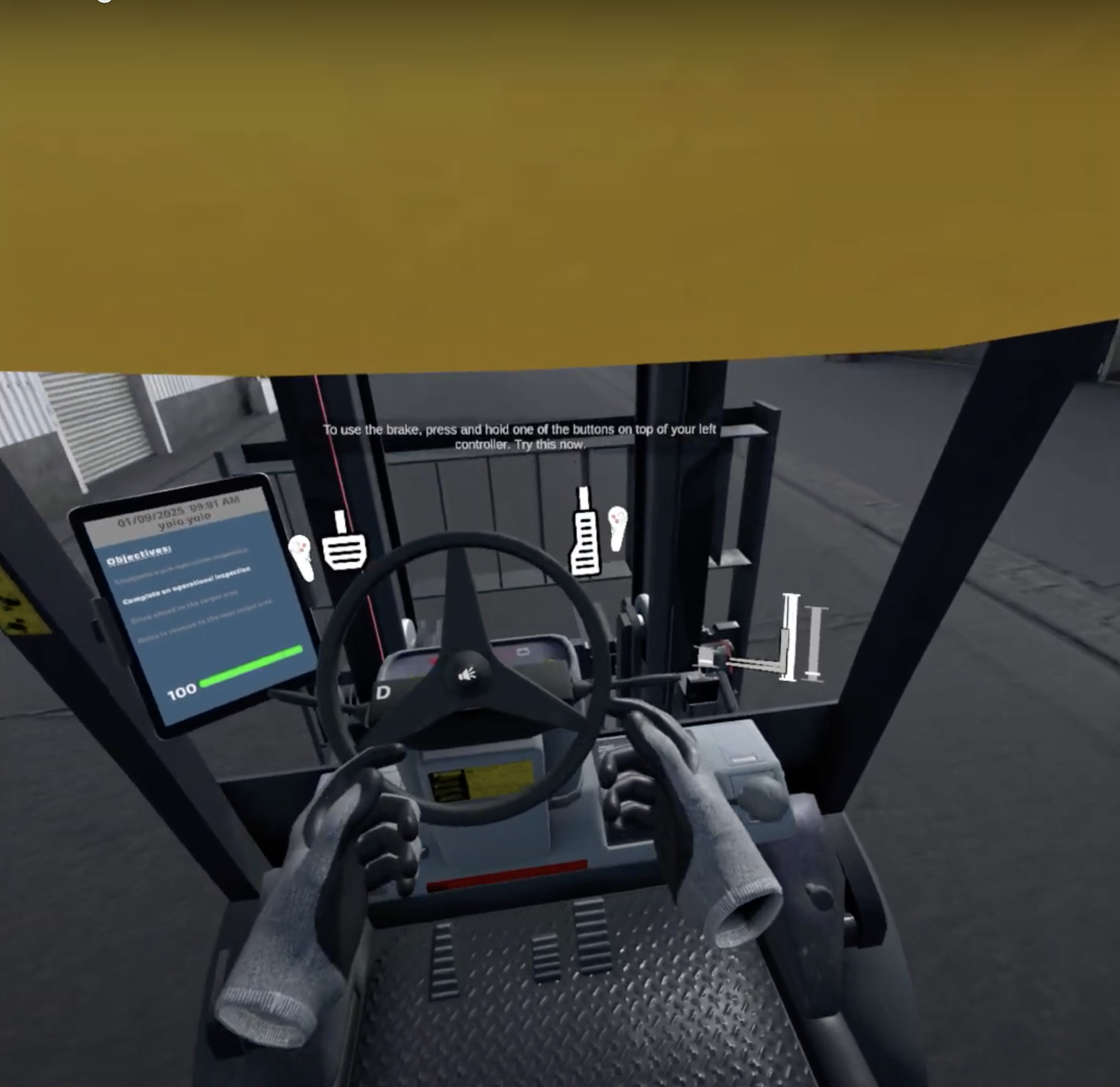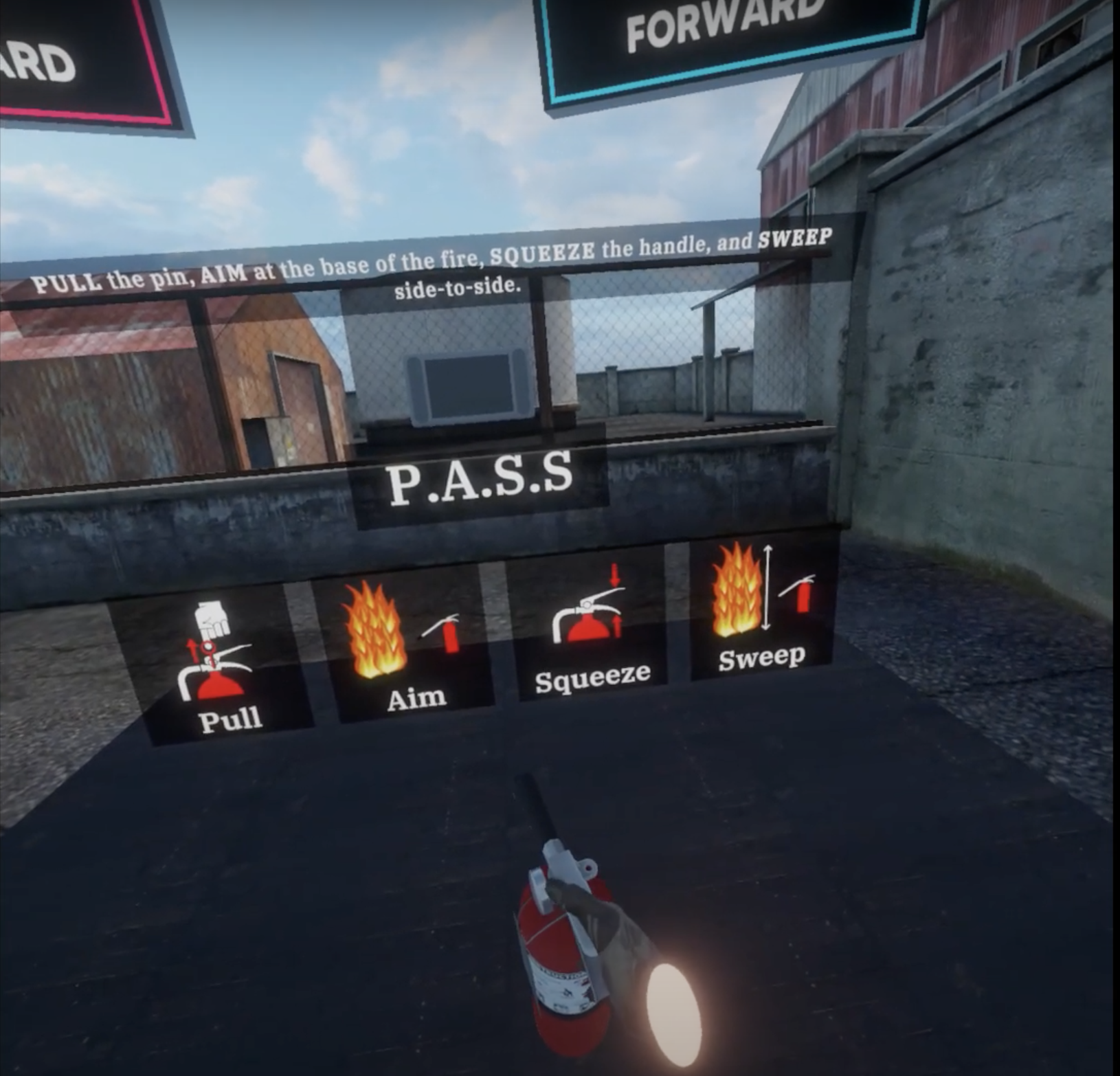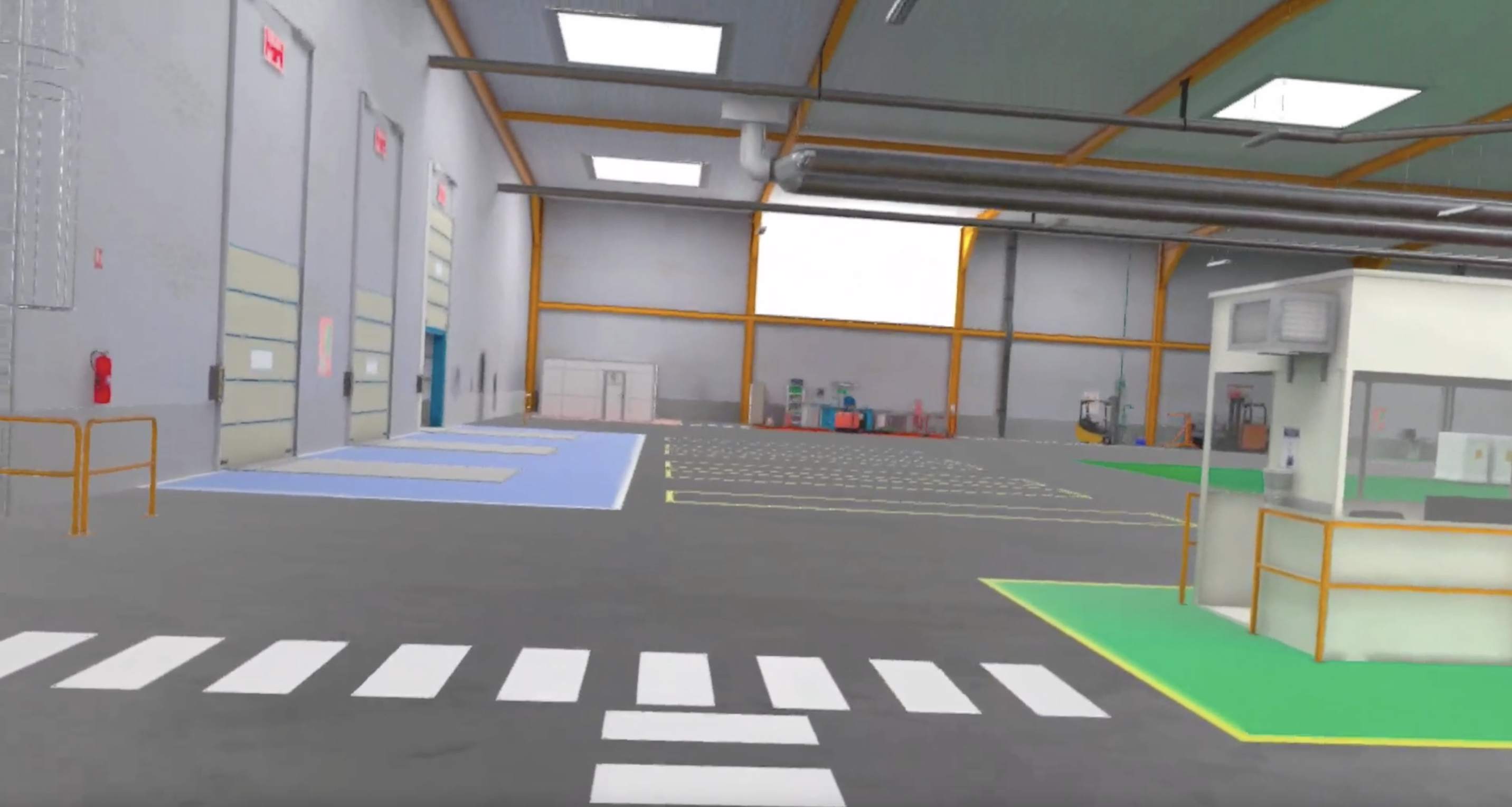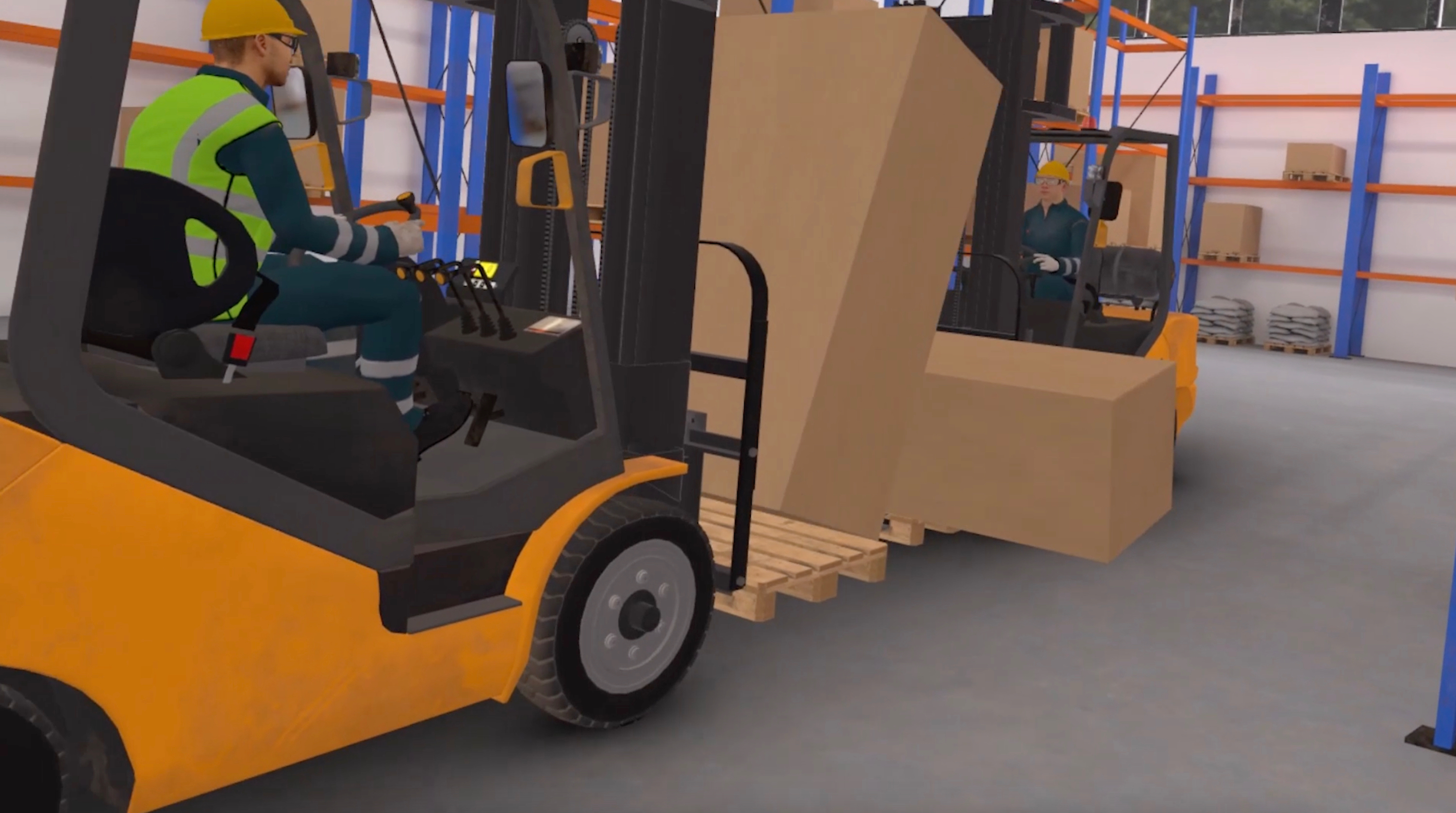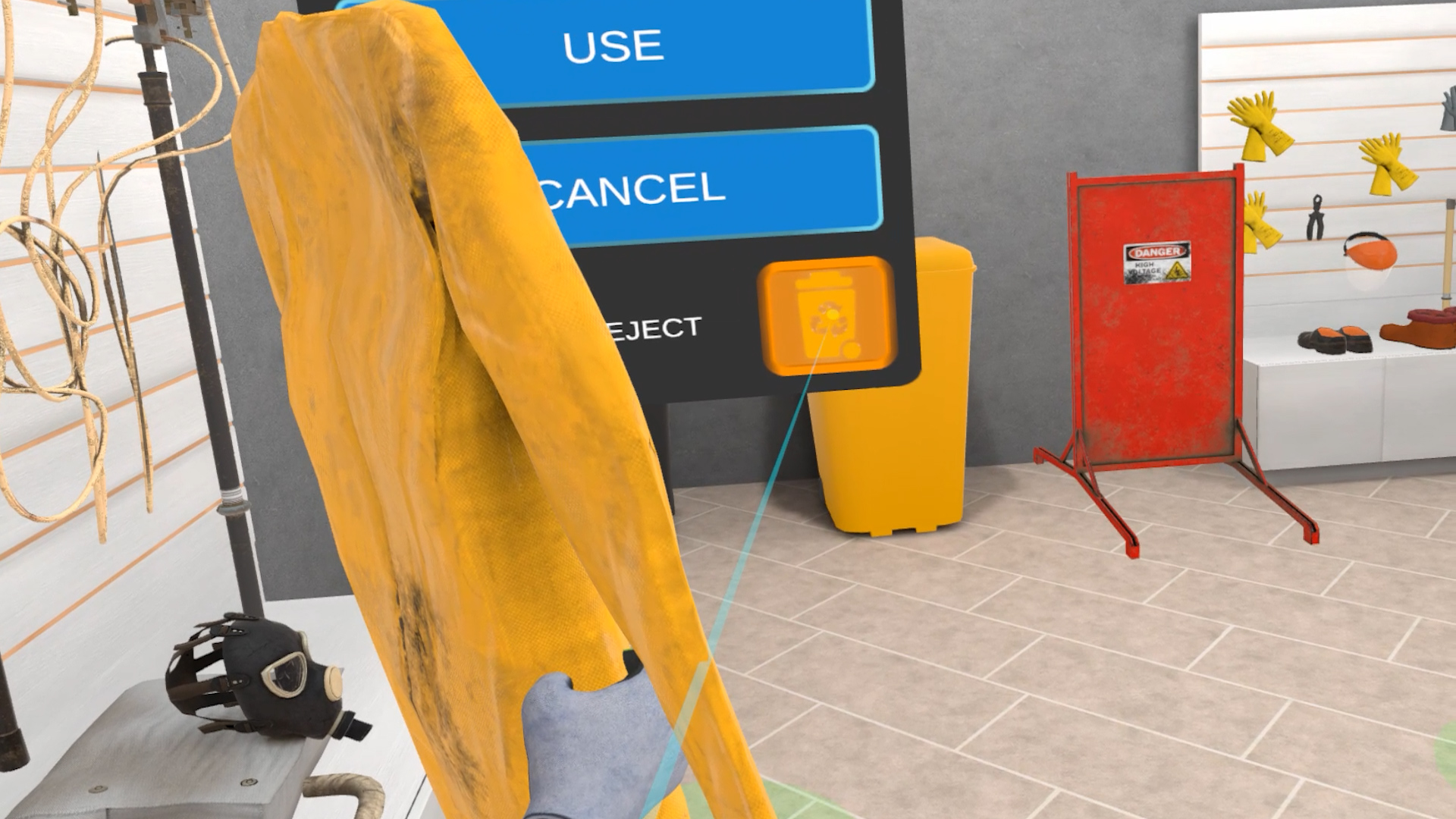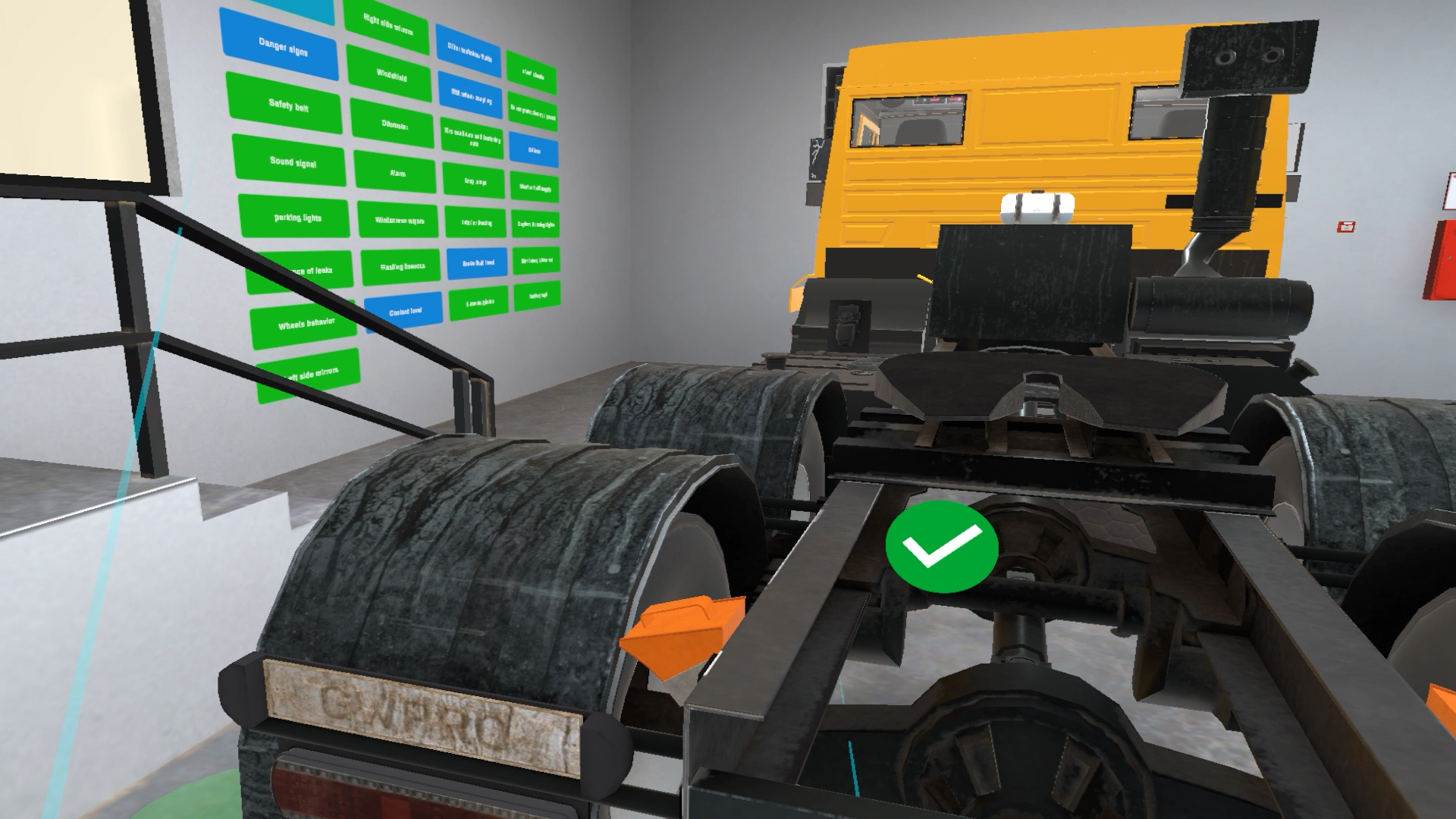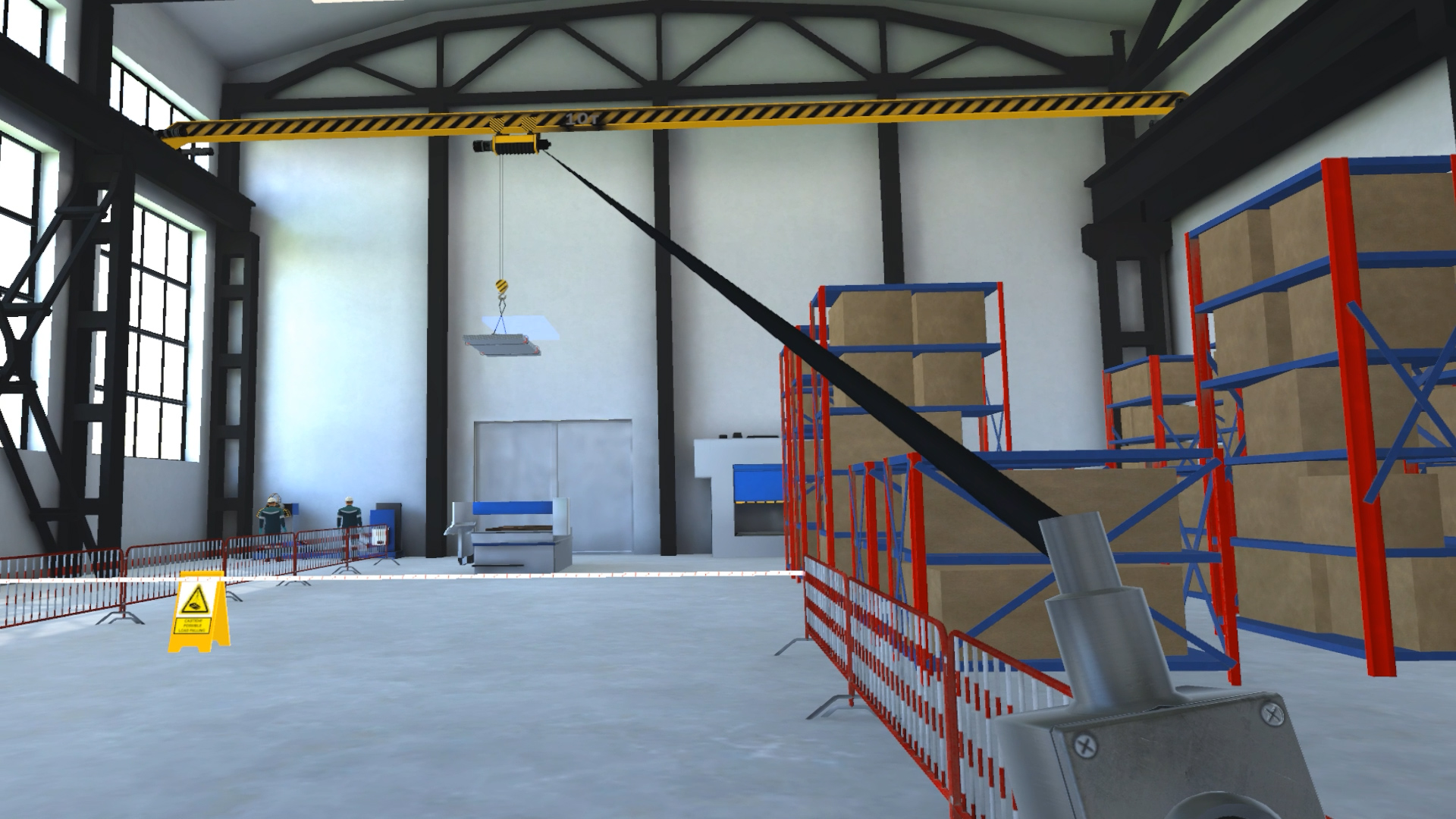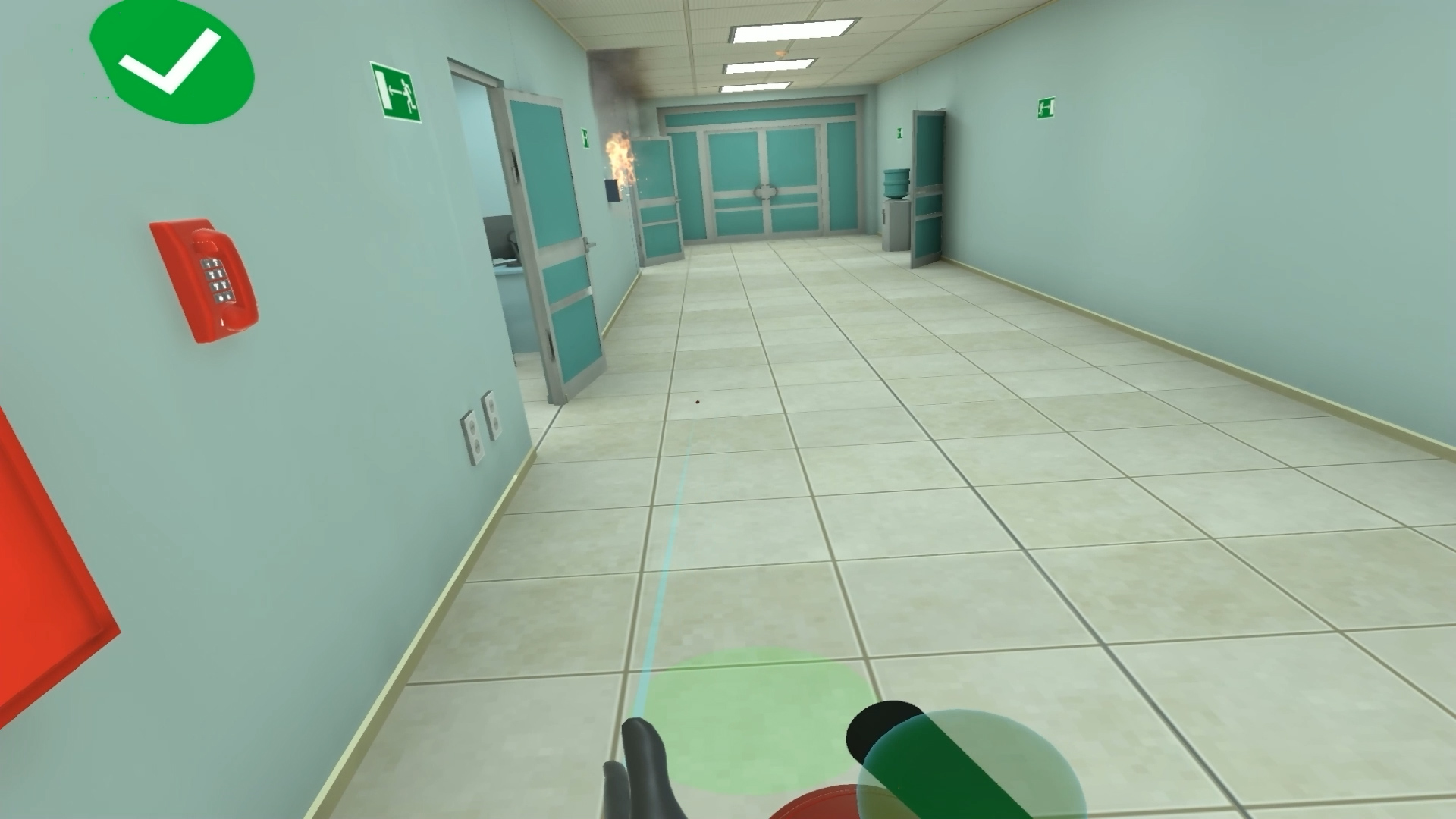Virtual Training in Logistics
The logistics industry is central in global supply chains, connecting manufacturing, warehousing, and end-users through a web of coordinated operations. With rising demand, evolving technologies, and tighter delivery windows, logistics organizations must maintain high performance while adapting to ongoing disruptions. Yet the complexity of transportation networks, warehouse automation, and compliance requirements presents serious training challenges.
Traditional onboarding and upskilling methods can't keep up with the pace or specificity required. Logistics professionals often work in fast-paced, high-risk environments where mistakes lead to shipment delays, safety incidents, or damaged assets. Virtual training in technology offers a better path forward. By simulating realistic logistics environments, virtual reality training solutions prepare teams for the real demands of the job, without putting people or operations at risk.
Training Gaps in the Logistics Industry
Logistics workflows involve constant decision-making in warehousing, transportation, fleet coordination, and inventory management. Training staff to handle real-time pressures, navigate digital systems, and follow safety protocols is no easy task, especially when resources are limited or work is distributed across multiple sites.
Some of the most pressing training challenges in logistics industries include:
- Equipment access restrictions. Forklifts, sorters, and robotics aren't always used for live demos.
- Inconsistent instruction. Processes may be taught differently across regions or shifts.
- High turnover. New staff often lack the context or confidence needed for immediate productivity.
- Limited visibility. Managers struggle to assess individual training progress accurately.
- Time constraints. There's rarely time to pull workers off the floor for extended training sessions.
Virtual reality training solutions eliminate many of these roadblocks. Workers can explore simulated warehouses, interact with digital freight systems, and practice key workflows before stepping on-site. Each session can replicate your logistics software solutions and safety protocols in detail, making training more practical, measurable, and scalable.
Why Virtual Training in Technology Works for Logistics
Modern logistics companies face pressure from multiple directions: global supply chain fluctuations, labor shortages, stricter safety standards, and growing digitalization. Teams must quickly adapt to new warehouse management systems, routing algorithms, and IoT-integrated tracking tools. All of this requires hands-on familiarity but does not disrupt operations.
Virtual training in technology enables logistics organizations to:
- Accelerate onboarding. New hires learn faster by practicing in digital simulations of actual facilities.
- Improve consistency. Everyone trains on the same systems, processes, and safety expectations.
- Support remote learning. Teams across locations access identical solutions anytime.
- Enhance safety. Hazardous scenarios like reverse docking or racking can be practiced without risk.
- Cut training costs. A single scenario can train hundreds of workers without recurring expenses.
Simulation-based learning transforms logistics training delivery, moving from passive observation to active skill development. Teams engage with realistic systems, gain muscle memory, and respond to challenges in a controlled environment that mirrors their future workplace.
Core Use Cases in the Transportation and Logistics Industry
Virtual reality training solutions are built to reflect logistics operations' true pace and structure. Instead of generic simulations, you get hands-on experiences that model your specific workflows, tools, and job roles. Some of the most impactful training scenarios across the transportation and logistics industry include:
- Warehouse navigation and automation. Train staff to operate forklifts, interact with automated systems, and navigate warehouse layouts efficiently.
- Loading and unloading procedures. Simulate real trailer conditions to teach optimal load distribution, securement, and safety checks.
- Fleet dispatch and route planning. Provide dispatchers realistic routing decisions based on weather, fuel, load type, or traffic data.
- Last-mile delivery. Walk drivers through package handling, address accuracy, and customer interaction in various conditions.
- Customs and compliance. Rehearse document verification and inspection steps required for cross-border shipping.
- Workplace safety. Practice emergency responses to spills, equipment malfunctions, or slip-and-fall incidents.
Every virtual program is designed to reinforce your team's daily tasks. From drivers to warehouse managers, learners can practice their full workflow in a space where mistakes are teachable, not costly.
Customization Based on Your Systems
No two logistics software solutions are the same. That's why your training shouldn't be either. Every virtual training program is developed in alignment with the tools, equipment, and interfaces your teams use in the field. That means fewer surprises and faster transitions from training to real work.
You can integrate:
- Digital twins of your facility. Let workers train in exact replicas of your warehouses, docks, or cross-docking hubs.
- Specific WMS or TMS interfaces. Build simulations that reflect your logistics software solutions down to the user interface.
- Branded equipment. Teach your teams about virtual versions of the lift trucks, conveyor systems, or handheld scanners that they operate.
- Job-specific pathways. Create training flows for pickers, packers, drivers, quality controllers, and logistics coordinators individually.
This degree of realism helps reinforce both technical procedures and organizational standards. Workers gain true fluency in systems that define their performance, and trainers can target the areas where precision matters most.
Real-Time Feedback and Certification
Effective training doesn't stop at completion. You need insight into how well your teams absorb and apply information in context. Virtual training in technology tracks every action learners take, helping you measure individual and organizational performance.
Your team can track:
- Completion time and accuracy. Identify slow response times, skipped steps, or repeated errors.
- Knowledge gaps. Use performance heatmaps to locate areas that need further training or clarification.
- Progress over time. See how each employee improves across repeated sessions.
- Role-readiness. Automatically trigger alerts or certificates once learners demonstrate required proficiency.
The data improves training, as well as supports compliance audits, safety assessments, and promotion decisions with hard evidence.
Scalability Across Logistics Operations
Once your virtual training scenarios are developed, they can be deployed across any number of sites, departments, or shift teams without scaling your training staff or investing in new hardware for every location. The flexibility of virtual reality training solutions allows your logistics organization to respond to business needs in real time.
You can roll out programs to:
- Regional warehouses or depots. Standardize training across distribution hubs, no matter where they are.
- Driver onboarding programs. Give new drivers hands-on experience with loading bays, route planning tools, and delivery protocols.
- Night and weekend crews. Offer consistent training access outside of traditional business hours.
- Cross-functional teams. Teach workers how roles interact within the broader logistics workflow.
Simulations run on VR headsets for maximum immersion but can also be configured for desktop or mobile use when needed. This versatility supports logistics industries operating in high-volume, 24/7 environments where time and uniformity matter.
Strategic Benefits Across Departments
Virtual training strengthens the logistics industry at every level. From the warehouse floor to executive leadership, stakeholders gain tools to train smarter, react faster, and perform better.
- Warehouse staff. Train on proper handling, positioning, and sorting techniques without disrupting live operations.
- Fleet managers. Validate driver readiness and simulate route adjustments in dynamic environments.
- Safety officers. Conduct virtual drills to reinforce emergency preparedness and accident prevention.
- IT and systems teams. Align training programs with updates to logistics software solutions, WMS, or IoT devices.
- HR departments. Track onboarding metrics and plan upskilling based on individual performance.
- Executives. See the long-term return in improved safety, productivity, and employee retention.
Unlike lecture-based programs, virtual training in technology connects directly to daily logistics challenges. It reinforces accountability, builds technical confidence, and delivers learning that can be measured.
Staying Ahead in a Competitive Industry
The transportation and logistics industry is evolving fast. Automation, AI, and digital supply chain tools reshape how goods move and how teams work. Organizations that fail to adapt risk delay, miscommunication, and loss of market position.
Virtual training enables you to:
- React to system upgrades. Prepare teams for new platforms or software tools before rollout.
- Train at speed. Launch learning programs the moment roles change or new regulations take effect.
- Retain top talent. Provide growth opportunities and structured development that engage workers.
- Adapt globally. Train multilingual teams across borders using localized virtual content.
Investing in modern logistics software solutions is essential, but ensuring your people can use them effectively is just as critical. Simulation-based training closes the gap between adoption and performance.
Program-Ace: Your Partner in Logistics Training Innovation
At Program-Ace, we help logistics companies solve training challenges with tailored virtual reality training solutions that reflect their real operations. Our team works closely with your stakeholders to design immersive, practical learning solutions that prepare teams for the field, warehouse, or control room.
You can start small, targeting a high-risk workflow like reverse truck docking or pallet scanning, or go wide, creating a library that covers every major function across your supply chain. Either way, we'll work with your subject matter experts to ensure the training is accurate, engaging, and aligned with your goals.
Our logistics software solutions integrate with your learning management systems, compliance tools, and operational platforms, so you don't need to build new infrastructure. You get results, not just content.
Build a Resilient, High-Performing Logistics Workforce
Virtual training is more than a productivity tool. It's a foundation for safer, faster, and smarter logistics operations. As demand grows, systems change, and job roles expand, your teams will be ready to keep moving because they've been trained for it. Reach out to Program-Ace today. We'll help you transform your workforce development strategy with solutions built for the challenges in the logistics industry.
Found 43 results

